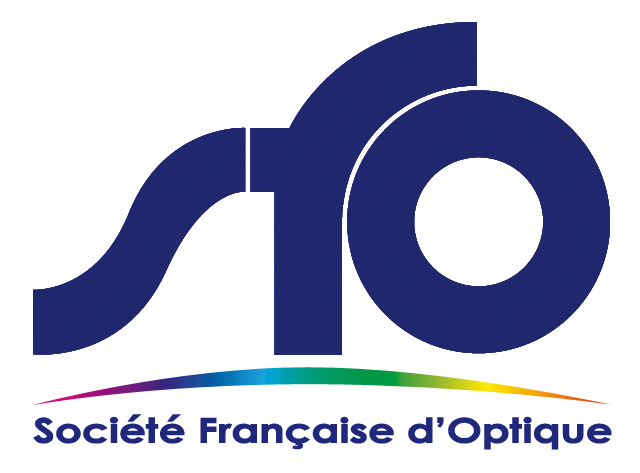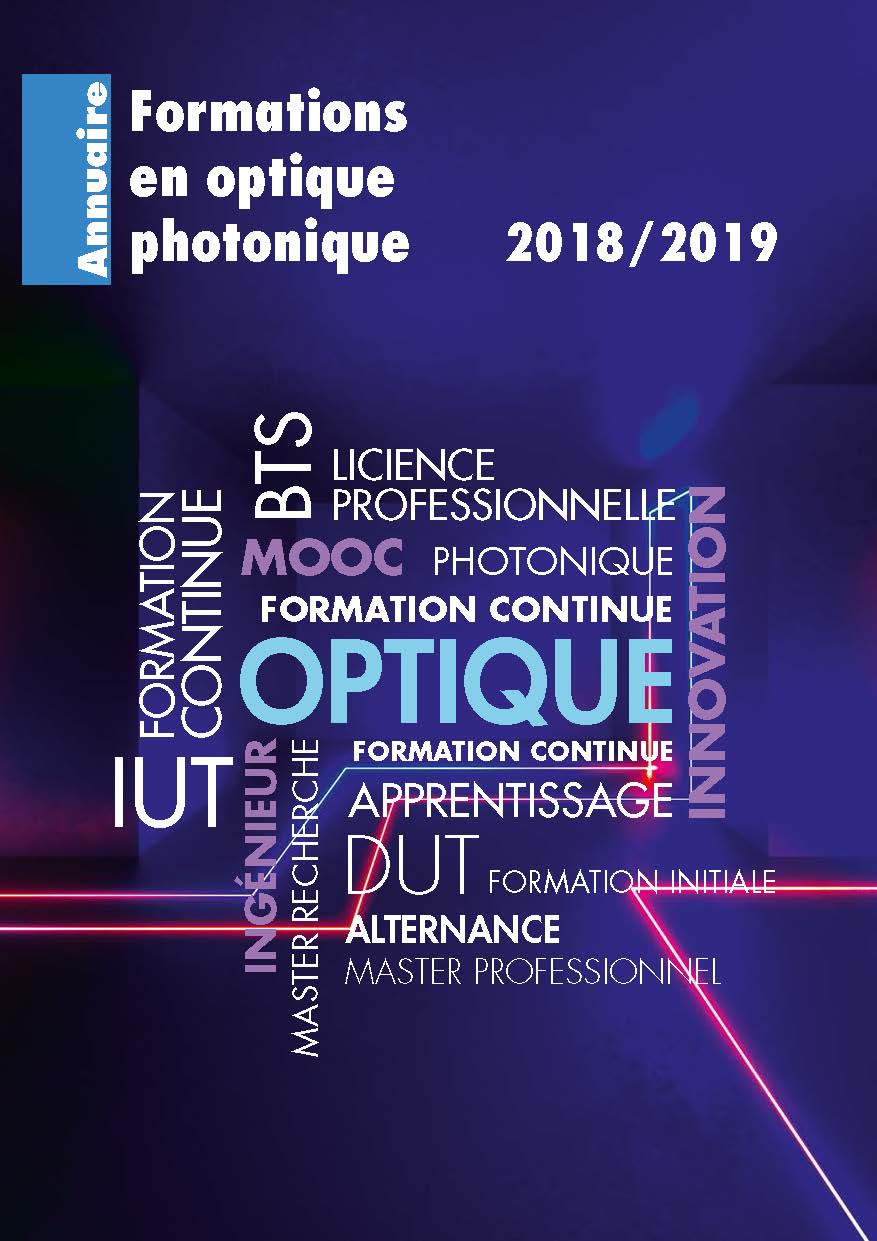Publier votre annonce
Nous publions dans le Blog emploi de la SFO, les annonces que nous proposent les membres de la SFO ou tout acteur de l'optique et de la photonique.
Postes d'ingénieur, Post-doctoraux, Sujets de thèse, Stages Masters, ....sont les annonces publiées régulièrement dans ce Blog emploi.
Seules les annonces concernant l'optique photonique sont publiées.
Pour la publication de vos annonces, elles doivent comporter un texte d'introduction en français, le ou les contacts, l'adresse complète de la société.
Nous ajoutons de préférence des adresses URL et non des fichiers à télécharger.
Formulaire pour publier votre annonce
Nos partenaires - Offres d'emploi
Emploi & stage PHOTONICS Bretagne
-
Full-field multispectral Mueller polarimetric imaging for improved surgery of neurological malignancies in Palaiseau (91) - LPICM
- Le 04/03/2024
- Dans Postes Ingénieur
Full-field multispectral Mueller polarimetric imaging for improved surgery of neurological malignancies
Description: Surgery is the crucial step in the treatment of brain tumors, in particular gliomas. While some well-defined tumors, such as metastases, can be removed en bloc, the majority of gliomas, which tend to grow infiltratively in the white matter of brain, are removed in piecemeal. During the surgery, it is essential to identify and respect the boundary between brain tumor and surrounding healthy brain tissue in order to carry out a radical resection of the pathological parts while preserving neurological function. However, solid tumor tissue is often difficult to differentiate from infiltrated white matter during surgery, even using a state-of-the-art intraoperative microscope. A non-complete tumor resection due to poor visualization of tumor margins leads to a worse prognosis for the patients, as the tumors invariably grow back from the remnants. Several imaging techniques (e.g. fluorescence imaging, ultrasound and magnetic resonance imaging) have been implemented for the intraoperative vizualization of brain tumors tissue, but all have some drawbacks. In summary, the efforts to visualize brain tumor and reliably identify the interface between healthy and pathological areas during neurosurgery have so far failed for many intrinsic brain tumors. Read more
Work location:
Laboratoire de Physique des Interfaces et des Couches Minces
Ecole polytechnique
Route de Saclay
91128 Palaiseau
FranceContact: Angelo Pierangelo (angelo.pierangelo@polytechnque.edu), Tatiana Novikova (tatiana.novikova@polytechnique.edu)
-
Postdoctoral position (2 years) on Full-field multispectral Mueller in Palaiseau (91) - LPICM
- Le 04/03/2024
- Dans Contrats post-doctoraux
Full-field multispectral Mueller polarimetric imaging for improved surgery of neurological malignancies
Description: Surgery is the crucial step in the treatment of brain tumors, in particular gliomas. While some well-defined tumors, such as metastases, can be removed en bloc, the majority of gliomas, which tend to grow infiltrative in the white matter of brain, are removed in piecemeal. During the surgery, it is essential to identify and respect the boundary between brain tumor and surrounding healthy brain tissue in order to carry out a radical resection of the pathological parts while preserving neurological function. However, solid tumor tissue is often difficult to differentiate from infiltrated white matter during surgery, even using a state-of-the-art intraoperative microscope. A non-complete tumor resection due to poor visualization of tumor margins leads to a worse prognosis for the patients, as the tumors invariably grow back from the remnants. Several imaging techniques (e.g. fluorescence imaging, ultrasound and magnetic resonance imaging) have been implemented for the intraoperative visualization of brain tumors tissue, but all have some drawbacks. In summary, the efforts to visualize brain tumor and reliably identify the interface between healthy and pathological areas during neurosurgery have so far failed for many intrinsic brain tumors. Read more
Work location:
Laboratoire de Physique des Interfaces et des Couches Minces
Ecole polytechnique
Route de Saclay
91128 Palaiseau
FranceContact: Angelo Pierangelo (angelo.pierangelo@polytechnque.edu), Tatiana Novikova (tatiana.novikova@polytechnique.edu)
-
Postdoctoral position (2 years) on acousto-optic imaging in Paris (75) - Institut Langevin ESPCI Paris
- Le 16/02/2024
- Dans Contrats post-doctoraux
Novel laser sources and real-time detection for in-vivo acousto-optic imaging
Description: Imaging biological tissue with light is a great challenge for the detection of objects (e. g. tumors) at large depth (>cm), since multiple scattering processes prevent from a conventional imaging. The combination of ultrasound (US) and light within the medium allows to retrieve an optical information guided by the ultrasound beam, ballistic at medical application frequencies, e.g. 6MHz. Such a strategy is called Acousto-Optic Imaging (AOI), also called Ultrasound Optical Tomography (UOT), it is based on the acousto-optic effect (AO). Such an imaging is developed by many teams worldwide, in the scope to develop a bi-modal system for Medicine and Biology, in combining complementary contrast with ultrasound (e.g. conventional B-Mode imaging) and light. Many architectures have been studied up to now, but technological bottlenecks remain in order to go beyond a proof of principle. This is due to the weakness of the acousto-optic signal, itself superimposed on a strong speckle background. Among the various techniques developed at Institut Langevin, digital holography is a promising configuration for the detection, using a CMOS camera with a large number of pixels, while data treatment is optimzed with a GPU acquisition scheme. Original US-excitations are used in order to optimize the number of photons tagged by the US. Such a point will be developed by the candidate with a new fully-programmable US-system. Read more
Work location:
Institut Langevin ESPCI Paris - CNRS UMR 7587
1 rue Jussieu
75005 Paris
FranceContact: François RAMAZ (francois.ramaz@espci.fr)
-
Doctoral contract in Visual Optics in Hong Kong (HK) - Hong Kong Polytechnic University
- Le 12/02/2024
- Dans Contrats post-doctoraux
3-year Doctoral contract in Visual Optics
Description: The ITF-funded project: Towards an Intelligent Eyeglass with Autocorrection, hosted by The Hong Kong Kong Polytechnic University (QS ranking: 65th), is inviting applications for a 3-year doctoral contract to develop a smart adaptive eyeglasses combining a wearable optics visual analyzer and an adaptive corrective focus. The smart adaptive eyeglass aims to capture the natural accommodative dynamics in real-world environments and provide in-depth adaptive optics adjustment for visual training and correction of accommodative deficiencies in presbyopic and low-vision populations.
The candidate will join an international team of experts in the field of Optics (Dr. Alexander Goncharov, Dr Charles-Edouard Leroux, Dr Elie De Lestrange-Anginieur), Visual Science (Dr Elie De Lestrange- Anginieur, Prof. Allen Cheong, Prof George Woo), and Electronics (Prof Eric Cheng) including:
• The School of Optometry (Home | School of Optometry (polyu.edu.hk) and the Department of Electrical and Electronic Engineering Home | Department of Electrical and Electronic Engineering (polyu.edu.hk) at the Hong Kong Polytechnic University,
• the MIPA laboratory Laboratoire MIPA – Mathématiques, Informatique, Physique et Applications (unimes.fr) at the University of Nimes and,
• the Applied Optics group Applied Optics group Applied Optics - University of Galway (nuigalway.ie) at the University of Galway.
As a member of the ITF-project, the doctoral candidate will be primarily based in Hong Kong. His/her degree will be delivered by the School of Optometry – an international research center recognized for its high-impact research on refractive anomalies and age-related ocular diseases.
The appointee is expected to design the optics of adaptive eyeglasses, develop wavefront sensing systems integrated into the eyeglasses, and build an adaptive control system for real-time adjustment of the wearer’s focus. Read moreWork location:
Hong Kong Polytechnic University
11 Yuk Choi Road
Hung Hom, Kowloon
Hong KongApplicatipn procedure (resume): Elie De Lestrange-Anginieur (elie.delestrangeanginieur@polyu.edu.hk)
-
Polarimetric visualization of healthy brain fiber tracts for tumor delineation during neurosurgery, - LPICM, Ecole polytechnique, France
- Le 24/01/2024
- Dans Autres catégories
HORAO - Polarimetric visualization of Healthy brain fiber tracts for tumor delineation during neurosurgery
Description: Complete resection remains the first and most decisive step in treatment of most brain tumors. However, it is still difficult for the surgeon to differentiate healthy brain tissue from tumor tissue, even with state-of-the-art surgical microscopes. This, and the problem of not knowing what neurological function is inherent to a specific area of white matter visible during surgery, are risk factors for both incomplete resections and post-operative neurological deficits. With the limitations of current strategies of tumor visualization in mind, this SINERGIA consortium proposes instead to visualize and identify fibre tracts, as the absence of fibres would imply tumor tissue. In addition, seeing the spatial orientation of the tracts in the white matter will help the surgeon to determine their function (based on anatomical knowledge) and thus help to spare eloquent fibre tracts. Optical polarization has previously identified fibre tracts on thin histological sections in transmission configuration. Optical coherence microscopy shows brain fibre tracts in backscattering configuration, but requires scanning of a sample with a limited field of view. Wide-field imaging Mueller polarimetry (MP) is free of the drawbacks of the above-mentioned polarimetric techniques. Being dye-free and non-invasive, wide-field imaging MP has the potential for real-time use during surgery, as it operates in reflection and does not require sample scanning.Several rounds of preliminary exploratory tests with a custom-built multi-wavelength wide-field imaging MP on fresh animal brain tissue and formalin-fixed human brain conducted at the Ecole Polytechnique were very encouraging as fibres could not only be very well delineated, but also showed the spatial orientation of the fibre tracts. Consecutive analyses in the near in vivo Lab at UHB confirmed these results in human surgical specimens. In our latest round of tests we were able to demonstrate the reliability of MP in more challenging, surgery-like settings and to reliably identify distinct fibre tracts in the Mammal brain.The aim of the proposed project is to further test and refine the imaging MP for the purpose of brain surgery up to the point where it can be applied in a clinical setting. Read more
Work location:
LPICM Laboratoire de Physique des Interfaces et Couches Minces
CNRS, Ecole polytechnique
91128 Palaiseau
FRANCEJob offers and the details of application procedure: JOIN US | HORAO
-
Ingénieur de recherche CDD (H/F) 9 mois en optique biomédicale à Marseille (13) - Institut Fresnel
- Le 09/01/2024
- Dans Contrats post-doctoraux
Ingénieur de recherche en optique biomédicale (CDD 9 mois H/F)
Description : Dans le contexte applicatif de la chirurgie thyroïdienne assistée (thyroïdectomie) (voir le résumé du projet ci-dessous), vous participerez au développement d'un dispositif expérimental d'imagerie par contraste laser (LSCI). Cela comprendra la mise en place et le test d'un dispositif d'illumination laser et d'un système d'imagerie à contraste speckle. Basé sur l'utilisation de fantômes artificiels de tissus biologiques diffusants, ce dispositif sera d'abord testé sur un échantillon fixe, puis les mesures de vélocimétrie seront validées à l'aide d'un échantillon en déplacement contrôlé. Ces premières étapes nous permettront d'optimiser les temps d'acquisition des images en fonction des vitesses d'écoulement attendues dans les cas cliniques typiques.
Ensuite, vous serez chargé de développer un modèle physique de "fantôme" de tissu vascularisé à l'aide d'un réseau microfluidique, en essayant de reproduire de la manière la plus réaliste possible un tissu biologique absorbant et diffusant, contenant un réseau circulatoire subsurfacique. Une fois ce banc d'essai construit, l'imageur prototype du LSCI sera adapté pour effectuer une série de mesures de test sur cet échantillon réaliste de tissu vascularisé. Enfin, vous aurez l'opportunité de participer au premier test clinique sur tissu humain à l'Hôpital Européen qui nécessitera l'adaptation du dispositif aux contraintes d'utilisation en salle d'opération stérile. Lire la suiteAdresse du poste :
Institut Fresnel
Faculté des Sciences - Avenue Escadrille Normandie-Niémen
13397 Marseille CEDEX
FrancePour postuler (CV, relevés de notes, copies de diplômes, contacts/références des encadrants de stages) : Julien FADE (julien.fade@fresnel.fr)



